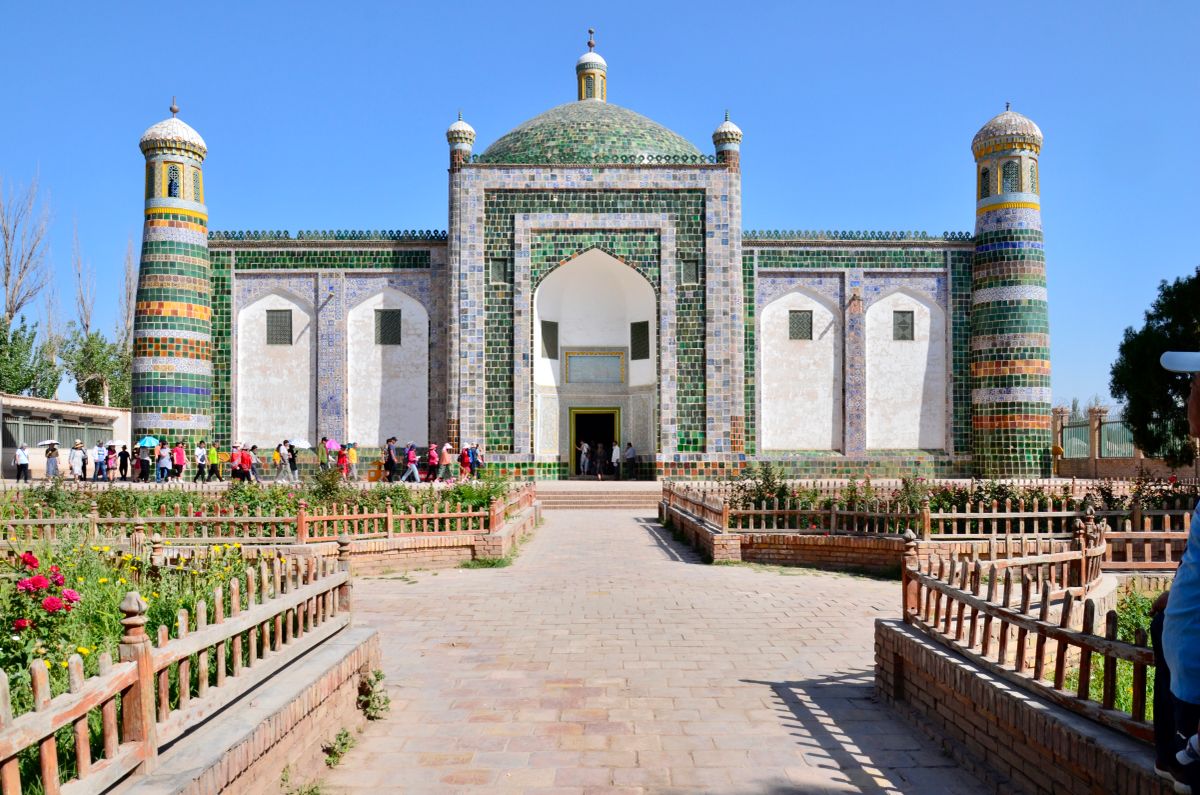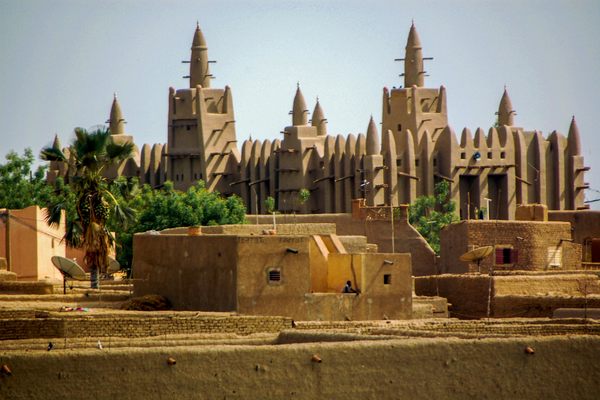About
This mausoleum is the most exquisite example of Islamic architecture in Xinjiang, China. The eye-catching building preserves the legacy of Afaq Khoja (1626-1684), an important political and religious figure in the Uyghur world.
Born in a family already known for its religious and political standing, Afaq Khoja was exiled due to his political propaganda against the ruling Moghuls. As an exile, he is credited with the collapse of the Moghul Dynasty by means of cunning military and diplomatic work. Afaq Khoja coupled his fierce support for Uyghur independence with unrelenting work for the spreading of Islam.
The mausoleum was built around 1640, not as a tomb for Afaq Khoja, but as a tomb for his father, who was also a prominent figure. Now, five generations of the Afaqi family are buried here, including Afaq Khoja, whom the mausoleum is named after.
The building consists of the gate tower, a great and a small mosque, a scripture hall, and the tomb chamber. The tallest point of the building is the top of the central dome, which is 55 feet (17 meters) high. At each of the four corners of the main building is a minaret. The main building and the four minarets are decorated with colorful tiles that acquire hues according to the light.
Note: Several spellings of Afaq Khoja exist due to the fact that he was Uyghur, but became known to the Western world through at least five diverging Chinese transliterations of his name. It didn’t help that he was known and referred to with at least three combinations of his name and titles.
Related Tags
Know Before You Go
Unless you speak Uyghur or Mandarin, finding Afaq Khoja can be difficult. In Uyghur, the mausoleum is called آفاق خواجه مزار (pronounciation: Apakh Khoja Mazar). In Mandarin, it is called 阿巴克霍加麻扎香妃墓 (pronunciation: ā bā kè huò jiā má zā xiāng fēi mù). If you can get your message across, it’s a short taxi ride from the centere of Kashgar. An alternative way of reaching it is to get to Haohan village (in Mandarin: 浩罕村). Show a picture of the mausoleum to someone, and they should direct you toward it.
Community Contributors
Added By
Published
November 1, 2018

















































